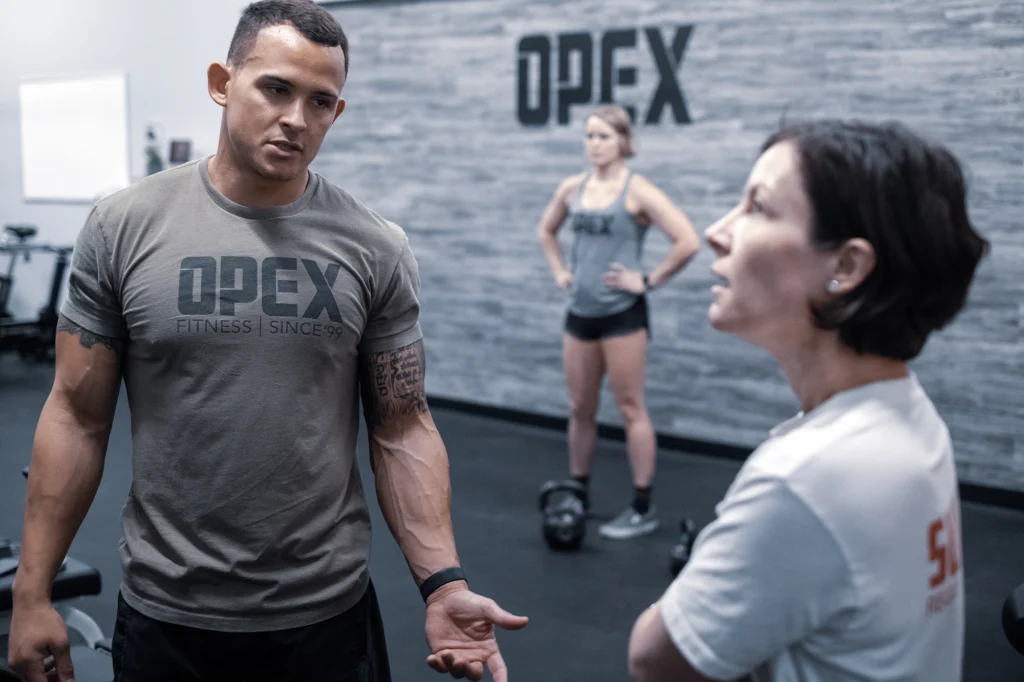Breaking Down the Business of Boutique Fitness

Boutique fitness gyms are uniquely positioned to educate clients, but with that comes a responsibility to ensure proper coaching and standards
At OPEX and CoachRx, it is vital that we keep an eye on the fitness industry as a whole and more specifically, the micro-gym and boutique models that we see around the world; these are usually the landing spots for our coaches that we educate through the OPEX Coaching Certificate Program and one of the models coaches using CoachRx are working within.
My perspective on the business of boutique fitness is influenced by trends, both within our industry and in broader societal behaviors. The overarching problem that I see in the industry as a whole, as well as in boutique gyms, is that a lot of models and methodologies are reactive, instead of proactive in nature (more on this later).
Leveraging data from recent reports and industry insights, let’s explore these trends and their implications for fitness coaches, trainers and gym owners. Then, I want to give my take on what I think every model should have as a focus embedded within – teaching physical literacy, equipping autonomy and encouraging personal responsibility to the general population.
Current Fitness Industry Trends
Post-Pandemic Shifts
We are now almost four years removed from the pandemic, but it is still insightful to see the impact it had on the fitness industry with around 25% of health and fitness facilities closing down, according to data cited by Athletech News. However, the industry has adapted by offering online and home-based fitness solutions. Now, gym attendance is rebounding, with people seeking in-person training sessions, as noted by a 13% increase in new memberships over pre-COVID numbers.
What does this mean?
We spoke about this extensively over the pandemic that people will once again crave the in-person experience that they were used to. By nature, we are social beings, we seek companionship and camaraderie and isolation leads to turmoil. We are now seeing a market for in-person connection and relationship building. The boutique model offers a great opportunity to bake this in the service offering.
Demand for Hybrid Fitness Models
This is also a result of the pandemic reaction- the need for models to offer both in-person and remote options. I believe a lot of models saw the operating expense upside of serving remote clients, but as always, there is a trade-off. That trade-off is lower retention than an in-person experience, a difficult time coaching movement and building relationships.
What does this mean?
We should be careful to think that one model can do everything well. By this I mean it is difficult to offer a world-class in-person and a world-call remote experience; most can do both well, but not great. The hybrid model can be dangerous as it splits focus. With that said, I do think there is an opportunity for boutique gyms to innovate and provide a seamless remote experience that has synergies with their in-person experience and serve the population that prefers to train at home. Great and intentional coaching is key to success here.

Health-Centric
There’s an increasing focus on the connection and holistic wellbeing aspects of fitness. People are prioritizing feeling good over just looking good. People want to look good, feel good and also BE good in their health.
What does this mean?
There is an opportunity for boutique gyms to integrate the whole person into their models. There’s an opportunity to talk about Basic Lifestyle Guidelines (BLGs) and to play a role in nutrition, lifestyle and daily behaviors rather than just the 30-60 minutes in the gym.
Technology Integration
According to the ACSM, wearable technology is a top trend, becoming a $100 billion industry. Innovations in fitness trackers, smartwatches and health monitoring devices are reshaping how people engage with fitness.
What does this mean?
I am a big proponent of using technology as a tool to increase awareness through useful insights and leveraging tech instead of being reliant on it. With that said, I think gyms should think about how they can leverage tech in a beneficial, low-barrier and seamless way without creating a reliance on technology. There is an opportunity to innovate here but I believe we should keep these points in mind when we do.
Staffing & Compensation
Creating a compelling career opportunity for coaches and trainers is vital in any model. We should not overlook the people who are representing the model, who have boots on the ground, and are directly responsible for bringing your mission to life day-to-day with clients. It is my opinion that we should look to take care of coaches to provide them with an opportunity to make this a profession, not just a job.
I have two data points to go off of here to gain insight into how we are doing from this front. We will look at the Two Brain Business 2022 State of the Industry Report as well as our own internal, 2023 OPEX Gyms average metrics.
According to the Two-Brain Business 2022 State of the Industry, most gyms have one to two full-time team members on average. Staffing accounts for 33% of expenses, with the average pay for a coach to run a class being $22.
The median net owner benefit per month across all gym categories is $3787, highlighting the financial challenges and opportunities in gym ownership.
According to OPEX Gyms 2023 Impact Metrics, The average OPEX Gym has four full-time coaches, and one part-time floor coach on staff. The average OPEX Gym coach is coaching 26 one-to-one clients at an average price point of $322 USD with an average take of $150 per client.
The average monthly profit per OPEX Gym is about $6,500 USD.
What does this mean?
There is an opportunity for boutique gyms to take a look at what they are doing to keep coaches on long-term, and to build incentive packages to keep them excited to continue with the model. This will likely be different for different models but there is an opportunity to look at these packages and to ask, how can I make this model a win-win-win, where the coach wins, the client wins and the business wins.

Foundational Focus
As I mentioned in the introduction, I think a lot of gyms are reactive in their approach rather than proactive. I think too many models are trying to slap band aids on problems instead of digging deeper and addressing the cause. I think every model should consider focusing on the following in their models:
Educating on Physical Literacy
Boutique fitness gyms are uniquely positioned to educate clients due to the smaller client counts and higher touch service offering. To truly have an impact, I believe it is imperative to not only prescribe what people should do, but also teach them why they should be doing it.
Building Autonomous Clients
I am a believer that we should all strive to reach a place of autonomy in most things, but that autonomy should be built on truth and principles. If we teach people the why and how, we are equipping them with a superpower that not enough people have – the knowledge to take care of their own wellness needs. Let’s be honest, most clients will not be with you until they die. If we build clients with the ability to be autonomous we are then having real impact, we are equipping people to not only do it on their own, but also to teach those around them how to do it.
Encourage Personal Responsibility
Encouraging personal responsibility in clients comes from the spirit of building autonomy. It is important that people realize that at the end of the day, it is on them. We should empower clients with knowledge, enabling them to make informed decisions and to play a role in their health and fitness journey. This empowerment leads to the development of sustainable habits and is crucial for long-term health outcomes. Personal responsibility also enhances client engagement, as they become more committed and compliant to their fitness, lifestyle and nutrition habits. It fosters autonomy, reducing reliance on coaches for motivation and decision-making.
The business of boutique fitness is evolving rapidly, influenced by technological advancements, changing consumer preferences and the aftermath of the pandemic. As leaders in this industry, our focus should be on adapting to these changes by embracing technology, prioritizing connection and overall wellness, and promoting physical literacy and autonomy among our clients. By doing so, we not only contribute to the success of our businesses but also play a crucial role in improving the overall health and well-being of our communities.
See Carl’s previous column here.
Carl Hardwick, CEO of OPEX Fitness & CoachRx, is a strong advocate for bringing honor to the coaching profession and raising the value of all fitness coaches. He lectures frequently about program design, business systems, and building a sustainable coaching career. Follow him on Instagram @hardwickcarl and OPEX Fitness on YouTube



